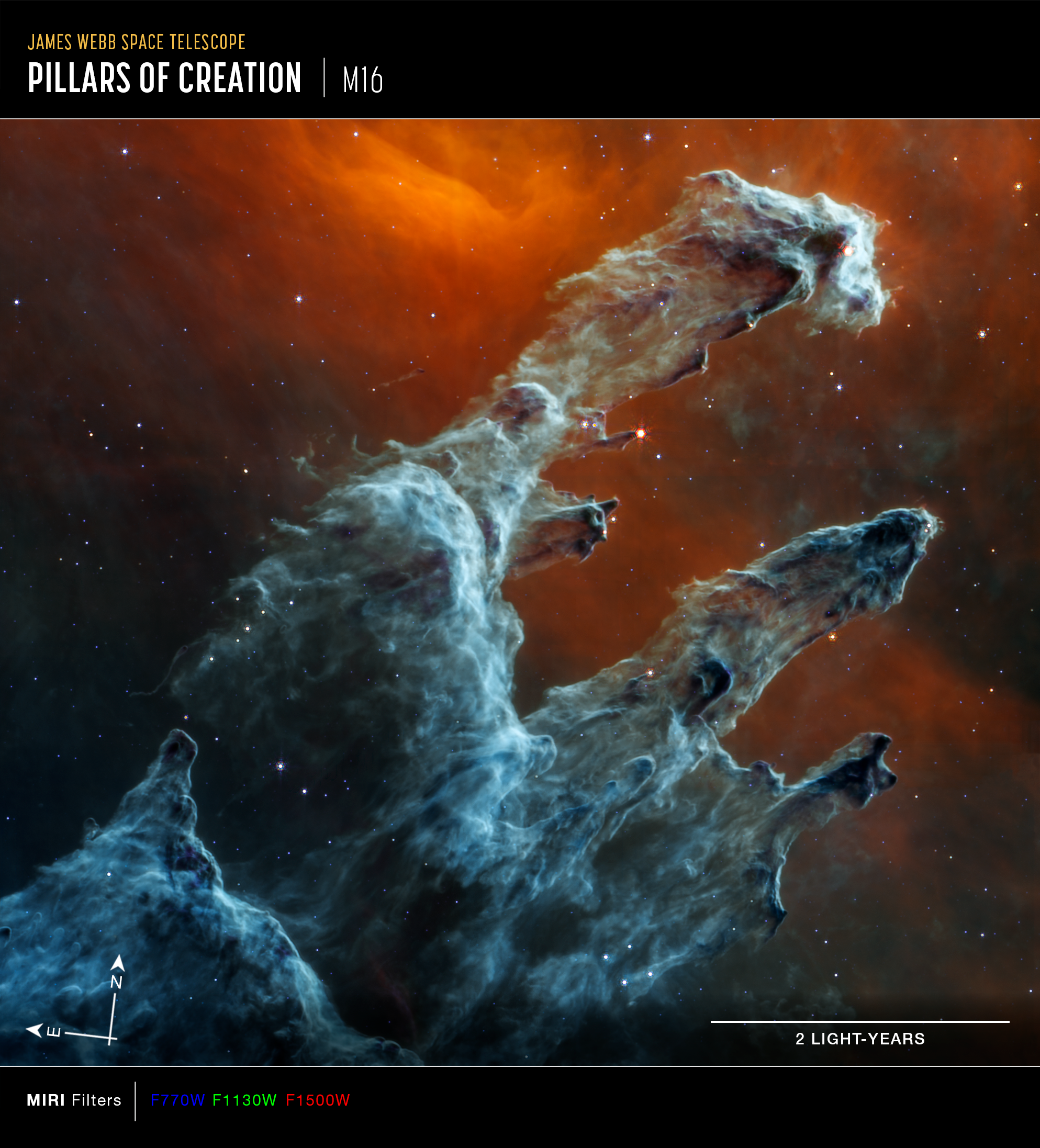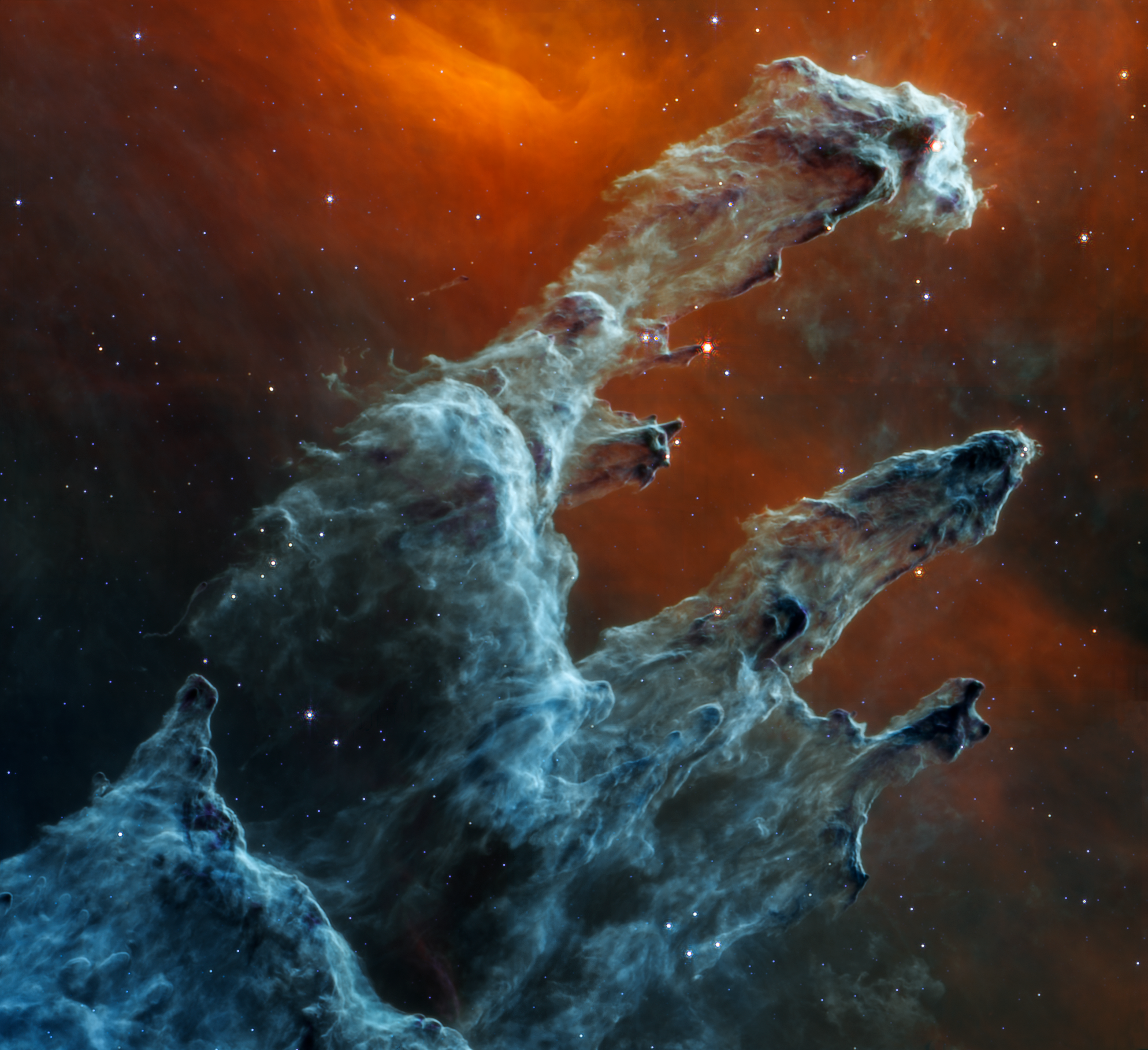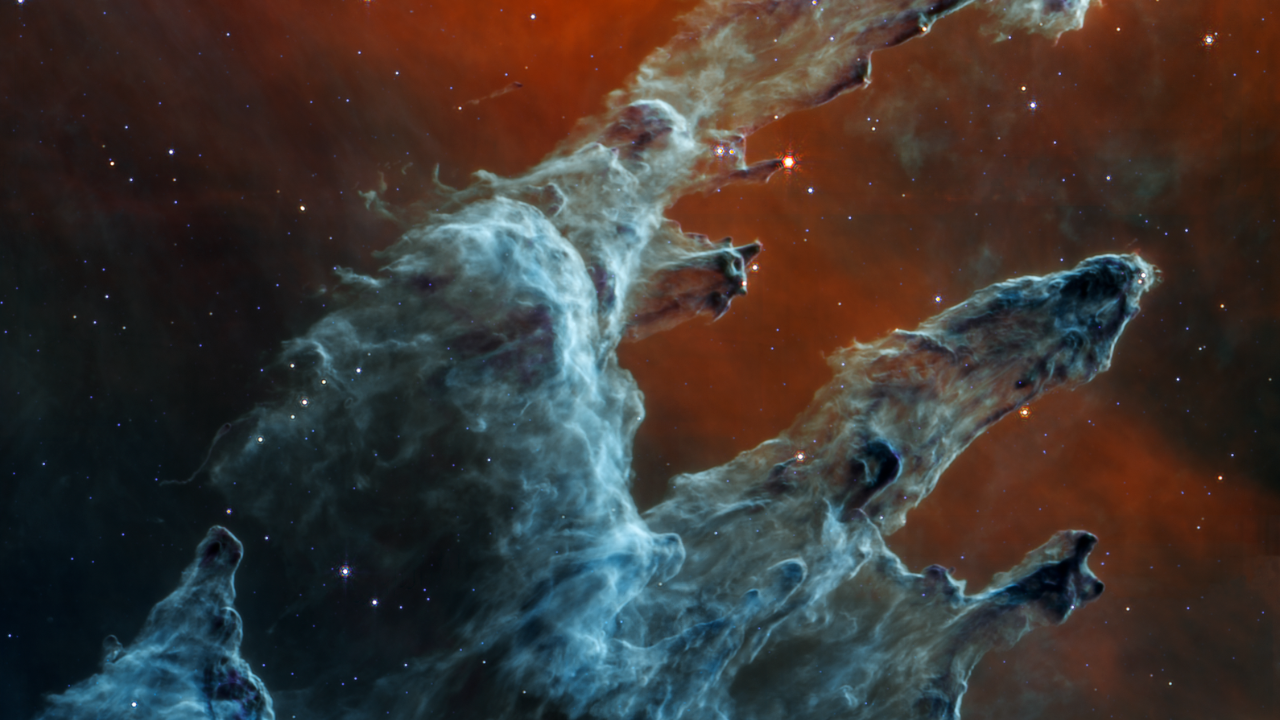1 min read
Pillars of Creation (MIRI Compass Image)

This image of the Pillars of Creation, captured by Webb’s Mid-Infrared Instrument (MIRI), shows compass arrows, scale bar, and color key for reference. It lies within the Eagle Nebula, which is also known as Messier 16 (M16).
The north and east compass arrows show the orientation of the image on the sky. Note that the relationship between north and east on the sky (as seen from below) is flipped relative to direction arrows on a map of the ground (as seen from above).
The scale bar is labeled in light-years, which is the distance that light travels in one Earth-year. (It takes 2 years for light to travel a distance equal to the length of the scale bar.) One light-year is equal to about 5.88 trillion miles or 9.46 trillion kilometers. The field of view shown in this image is approximately 7 light-years across.
This image shows invisible mid-infrared wavelengths of light that have been translated into visible-light colors. The color key shows which MIRI filters were used when collecting the light. The color of each filter name is the visible light color used to represent the infrared light that passes through that filter.
About the Object
- R.A. PositionR.A. PositionRight ascension – analogous to longitude – is one component of an object's position.18:18:48.17
- Dec. PositionDec. PositionDeclination – analogous to latitude – is one component of an object's position.-13:48:26.03
- ConstellationConstellationOne of 88 recognized regions of the celestial sphere in which the object appears.Serpens
- DistanceDistanceThe physical distance from Earth to the astronomical object. Distances within our solar system are usually measured in Astronomical Units (AU). Distances between stars are usually measured in light-years. Interstellar distances can also be measured in parsecs.6,500 light-years (2,000 parsecs)
- DimensionsDimensionsThe physical size of the object or the apparent angle it subtends on the sky.Image is approximately 7 light-years across
About the Data
- Data DescriptionData DescriptionProposal: A description of the observations, their scientific justification, and the links to the data available in the science archive.
Science Team: The astronomers who planned the observations and analyzed the data. "PI" refers to the Principal Investigator.This image was created from JWST data from proposal: 2739 (K. Pontoppidan)
- InstrumentInstrumentThe science instrument used to produce the data.JWST>MIRI
- Exposure DatesExposure DatesThe date(s) that the telescope made its observations and the total exposure time.14 Aug 2022
- FiltersFiltersThe camera filters that were used in the science observations.F770W, F1130W, F1500W
- Object NameObject NameA name or catalog number that astronomers use to identify an astronomical object.M16, Eagle Nebula, NGC 6611
- Object DescriptionObject DescriptionThe type of astronomical object.Emission Nebula
- Release DateOctober 28, 2022
- Science ReleaseHaunting Portrait: NASA’s Webb Reveals Dust, Structure in Pillars of Creation
- CreditNASA, ESA, CSA, STScI; Image Processing: Joseph DePasquale (STScI), Alyssa Pagan (STScI)

These images are a composite of separate exposures acquired by the James Webb Space Telescope using the MIRI instrument. Several filters were used to sample different infrared wavelength ranges. The color results from assigning different hues (colors) to each monochromatic (grayscale) image associated with an individual filter. In this case, the assigned colors are: Blue: F770W, Green: F1130W, Red: F1500W
Related Images & Videos

Pillars of Creation (MIRI Image)
NASA’s James Webb Space Telescope’s mid-infrared view of the Pillars of Creation strikes a chilling tone. Thousands of stars that exist in this region disappear – and seemingly endless layers of gas and dust become the centerpiece. The detection of dust by Webb’s Mid-Infrared...

The Pillars of Creation in Mid-Infrared Light
Compare NASA’s James Webb Space Telescope mid-infrared light image of the Pillars of Creation to its near-infrared light image in this short video tour. Thousands of stars have formed in this region, but interstellar dust cloaks the scene in mid-infrared light, which is why the...
Share
Details
Laura Betz
NASA’s Goddard Space Flight Center
Greenbelt, Maryland
laura.e.betz@nasa.gov
NASA, ESA, CSA, STScI
Joseph DePasquale (STScI), Alyssa Pagan (STScI)































